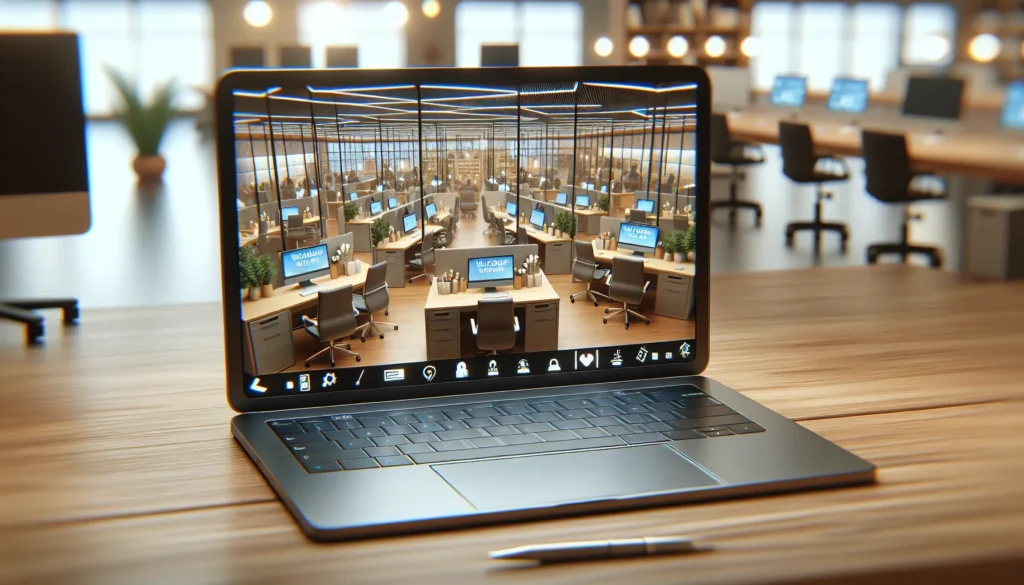Effective Onboarding Strategies for Remote Employees: Building Culture from Afar
Navigating the remote work landscape is akin to launching a ship into the vast, uncharted sea. The wisdom of seasoned pioneers—including founders and Chief Culture Officers—helps keep the ship aligned and on course. This Q&A unveils key strategies for seamlessly onboarding remote employees, beginning with the innovative approach of hosting interactive virtual onboarding sessions and concluding with the often overlooked but impactful practice of giving the gift of time. Dive into all eleven insights to steer your own course through these waters.
- Host Interactive Virtual Onboarding Sessions
- Give the Gift of Time
- Implement Gamified Onboarding Modules
- Combine Training and Virtual Orientation
- Hold Monthly Culture Sessions
- Assign a Mentor or Buddy
- Schedule Introduction Calls
- Provide Immediate Tool Access
- Create a Welcome Channel
- Familiarize with Collaboration Tools
- Send Onboarding Kit Early
Host Interactive Virtual Onboarding Sessions
One strategy that has proven highly effective for onboarding remote employees is interactive virtual onboarding sessions. Instead of just sending out a series of documents and having new hires read them on their own, we host live, interactive sessions where new team members can engage directly with various departments.
For example, during a recent onboarding, we held a series of virtual workshops where new hires met with key team members from our Legal, Tech, and Client Services departments.
This approach allowed them to ask questions in real time and gain a comprehensive understanding of our company culture and processes. One new hire mentioned that these sessions were invaluable in helping them feel connected and informed, despite being miles away from the office.
This interactive onboarding practice not only accelerates learning but also strengthens team cohesion and ensures that remote employees feel fully integrated into our company culture.
 Aseem Jha
Aseem Jha
Founder, Legal Consulting Pro
Give the Gift of Time
The mindset is often the most significant barrier to creating a successful, one-of-a-kind, intentional onboarding experience. One should start by remaining receptive to others’ needs through a consideration of time and circumstances.
I strongly believe that one of the best gifts we can share when onboarding remote employees is the gift of time, specifically. Let me break it down here:
It starts with giving the new lead enough time to make them feel welcome and to get to know the entire team they will be working with. I am not talking about the slow start, though, but rather the intense dive into the corporate culture, a quick dip into what they will become a part of.
Taking into account the time needed to lay grounds for understanding through setting clear expectations from day one.
Work on building trust and fundamentals for a strong relationship that will help stakeholders achieve desired outcomes.
 Dominika Weston
Dominika Weston
Talent Manager, GLOBO
Implement Gamified Onboarding Modules
We’ve designed an interactive onboarding program called “Toggl Journey,” where new remote hires navigate through various modules, each themed around a key aspect of our company culture and work ethics. The gamified elements make learning about our systems and protocols engaging, and it allows new team members to experience our culture in a memorable way.
We have monthly “Integration Workshops” for new hires, where they present a small project they’ve completed using their new skills. This not only demonstrates their learning but also encourages interaction with various team members, facilitating a deeper understanding and integration into our culture.
 Alari Aho
Alari Aho
CEO and Founder, Toggl Inc
Combine Training and Virtual Orientation
The strategy we use for onboarding remote employees involves a combination of training sessions, guided walkthroughs, and virtual orientation.
The training sessions aim to cover the company policies, tools that we use, and job-specific skills that new remote employees need to develop. Once the employees have been familiarized with what the company stands for and the tools we use, what follows is to give them access to the software they will use for their jobs.
At this point, we also provide necessary documentation to ensure the remote employees understand our IT policy to prevent instances of IT-shadowing that could pose a risk to our systems.
The last step of the onboarding process for remote employees is to host a virtual orientation event. In this video event, the new employees get to know other employees in the company and their roles. Additionally, they learn about the company culture and how to show it through their work.
 Clooney Wang
Clooney Wang
CEO, TrackingMore
Hold Monthly Culture Sessions
Our strategy for onboarding remote employees focuses on ensuring a fair and equitable experience, regardless of location. We are deeply committed to fostering an inclusive company culture for all team members, whether they are on-site or off-site.
To facilitate this, we hold monthly culture sessions designed specifically to seamlessly integrate both off-site and on-site employees. These sessions emphasize education and engagement, allowing team members to participate in interactive activities that promote collaboration and strengthen connections. To ensure a similar experience for all, we send materials to off-site team members in advance, allowing them to prepare alongside their on-site counterparts.
By leveraging technology, we ensure that remote team members can fully engage and contribute to discussions, making them feel as involved as their on-site counterparts. Feedback has shown that this approach successfully keeps off-site team members connected and actively engaged during the onboarding process.
By promoting collaboration through these monthly culture sessions, we cultivate a strong sense of belonging and reinforce our culture-first ethos. This inclusive strategy allows every employee to thrive, regardless of their work location, creating a cohesive and supportive team environment.
 Debby Durr
Debby Durr
Chief Culture Officer, Premier Wealth Partners
Assign a Mentor or Buddy
When onboarding remote employees, my strategy focuses on creating a strong sense of connection and clear communication from the very start. One effective practice we’ve adopted is assigning a “buddy” or mentor to each new hire. This person is not only there to help the new employee navigate their role and responsibilities but also to serve as a cultural ambassador, introducing them to our company’s values, communication style, and social norms. This mentorship helps bridge the gap between remote work and team cohesion, allowing new employees to feel more integrated and supported during their transition.
Additionally, we emphasize structured onboarding through detailed virtual orientations and regular check-ins. These sessions cover both technical onboarding—like setting up tools and understanding workflows—and cultural aspects, such as team values, communication protocols, and collaboration expectations.
Weekly team-wide video calls also give new hires a platform to introduce themselves and feel more connected to the broader team. This intentional focus on communication and support ensures that remote employees not only understand their role but also feel like an essential part of our company culture from day one.
 Shehar Yar
Shehar Yar
CEO, Software House
Schedule Introduction Calls
Onboarding remote employees is all about making them feel connected and part of our culture from the start. One strategy that works wonders for us is scheduling introduction calls with key team members across different departments. This gives newcomers a chance to understand how the company operates and fosters relationships right away. They can ask questions and get a feel for our collaborative spirit, which is essential in a remote environment.
Another practice we’ve implemented is creating a warm-welcome package. We send new hires a package with company swag, snacks, or even a personal note from their team. It’s a simple touch, but it really helps them feel valued and excited to be part of our team. These small gestures go a long way in making remote employees feel at home and fit into our company culture.
 Danilo Miranda
Danilo Miranda
Managing Director, Presenteverso
Provide Immediate Tool Access
We set up an intro call with the new hire and key team members. It’s less about diving into tasks and more about getting to know each other. Building these personal connections early helps ease them into the team.
We also immediately give new employees access to all the tools they need—including project management software, communication platforms, and any other tech they’ll be using. Having everything in place upfront lets them hit the ground running and reduces any awkward downtime.
Assigning a mentor is also really effective. This person isn’t necessarily their manager but someone who’s been with the company for a while. The mentor is there to answer questions, show them the ropes, and help them understand how we do things. It takes the pressure off and helps new hires feel more comfortable.
Our onboarding process is designed to be interactive. We regularly seek feedback to ensure new employees are settling in well and make adjustments if needed. This approach, which is not one-size-fits-all, makes the process more engaging and personal. It has made a significant difference in getting new employees to feel valued and part of the team faster.
 Jared Stern
Jared Stern
Managing Member, Uplift Legal Funding
Create a Welcome Channel
We have created a welcome channel for onboarding remote employees and integrating them into our company culture. This strategy fosters a sense of community, and newly recruited remote employees feel supported from the first day of their contribution. They receive a clear picture of our company’s culture, policies, and values as well as information about key team members, which helps the onboarding remote employees know whom to reach for support and instructions.
For this, we use Trello, a popular management tool, to create our welcome channel. It contains a video welcome message that offers a virtual tour of our organization, which helps our onboarding remote employees know more about our working culture and policies. They get board messages about their responsibilities and a list of existing employees who can guide them through their onboarding process. Also, with time-to-time virtual meets, we encourage them to ask any questions and share their opinions about their experiences.
This strategy helps create a collaborative environment where onboarding remote employees feel connected and valued from their first day of joining. I’d suggest that while creating a welcome channel, try to avoid instant information overload. You can include training materials and handbooks on using essential software within the channel.
 Soubhik Chakrabarti
Soubhik Chakrabarti
CEO, Canada Hustle
Familiarize with Collaboration Tools
We prioritize familiarizing new remote team members with our collaboration and communication tools. We make sure that everyone feels comfortable with “how we do things here” from the beginning, and this helps team members feel comfortable and confident in their interactions with others.
 Susan Snipes
Susan Snipes
Head of People, Remote People
Send Onboarding Kit Early
One best practice we have is onboarding a few weeks before an employee’s joining date. We send them an onboarding kit with information and expectations about their role, and schedule a personal welcome meeting. Following that, each new recruit is assigned an experienced team member as a buddy who mentors them for the first couple of weeks. This buddy helps them onboard into both the technical aspects of their role and the unwritten norms of our remote work culture: how we communicate, what tools are preferred, and even fun activities, such as virtual coffee breaks.
We also apply digital onboarding platforms with interactive resources, training modules, and a way of having easy access to key information. This includes having an onboarding portal in the Confluence Workspace dedicated at our company, where new hires have everything they need in one single place. We feel that this really works to our advantage, as it means the new employees do not feel frustrated or anxious with all the information they receive when starting.
The above approach accelerates their learning curve and makes them feel that they belong—very important in a remote work setup. Building these personal connections early on helps new employees feel supported and part of the team, wherever they work from.
 Alexei Morgado
Alexei Morgado
Founder, Lexawise Real Estate Exam Prep


